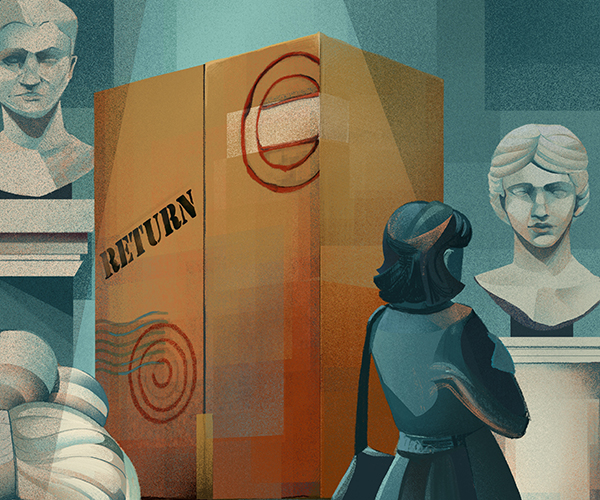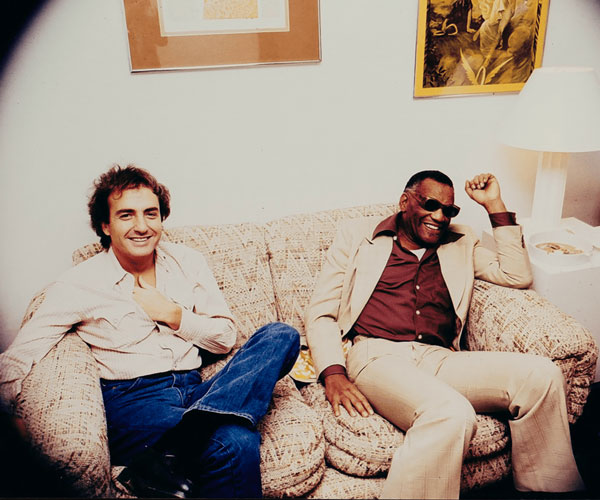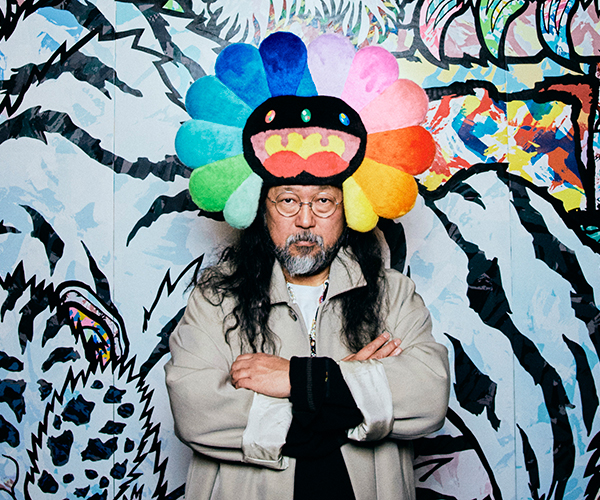God must love what Alenka Banco’s done with this place.
The former St. Josaphat Catholic Church is luminescent. It’s early fall and Clarence Van Duzer’s large, colorful abstract paintings and mixed-media works hang like stations-of-the-cross around the former sanctuary. The cavernous nave, resurrected as Banco’s year-old Convivium33 Gallery, frames a long table, lit with sparkling candelabras, along the communion aisle.
In a black dress with her blond hair sleekly pulled back, Alenka is not your typical evangelist, but this intimate “Dinner with Art” gathering espouses the gallery’s mission to commune with art and showcase established local artists.
She stands from her church pew seat to toast the 86-year-old Van Duzer, best known to Clevelanders for his sculpture “Global Flight” at Hopkins International Airport. Banco modestly raises her glass and introduces a Cleveland master as an old friend.
Van Duzer turns to her with a simple, “I’ve never been so honored before.”
Alenka Banco’s first art gallery had previously been the home of a crack dealer named Eddie. In the months after she and her husband, Danny, purchased the run-down Tremont building, they frequently received unwelcome knocks on the door at all hours from Eddie’s customers. Hoping for a good night’s sleep, they finally posted a sign out front, “Eddie Moved.” The sign stayed and “Eddie Moved” became the name of their gallery.
That was the late 1990s, and now Banco has moved. Her journey from Tremont to her current gallery began tragically when Danny committed suicide in 1998 after suffering from depression.
Banco speaks tearfully and openly about her loss. “I don’t think you ever get over it,” she says. “Your pain just changes.
“I now have a sensitivity for everyone who suffers, no matter what the pain.”
Banco happened upon her current gallery home, the former St. Josaphat church on East 33rd Street in the St. Clair and Superior neighborhood, as movers were emptying its furniture. She stopped for a closer look.
“From the moment I stepped into this space I could see this gallery,” she remembers. But it wasn’t until she lost Danny that she considered pursuing the idea. “Six months after Danny died, I found out the property was still for sale,” she recalls. “I honestly felt like it was waiting for me.”
In 2001, Bishop Anthony Pilla and the Diocese agreed to sell Banco the desanctified church because her plan included extensive renovations, and her gallery would be free and open to the public. She paid $189,000 for the 1915 building, which needed, among countless other things, a new roof and new heating system.
It took two years of almost continuous renovation to create Convivium33 — so named from the Latin for celebration and feast, because Banco believes art should be for both the mind and the soul.
The 22,000-square-foot Josaphat Arts Hall complex includes the gallery and studios for painting, glass fusion and stained glass, which all offer classes. A Web designer occupies the third floor and various artists lease space in the former nunnery and rectory.
Banco was raised Catholic in Cleveland and graduated from St. Vitas Elementary School in the neighborhood. She remains passionate about her responsibility to the former parishioners and the neighborhood.
“I am the caretaker of a building that has touched so many lives,” she explains. “People got married and baptized their children here. When former parishioners know that I understand they have important memories with this space, it seems to be enough for them. They’re relieved and grateful to be able to visit.”
Undeniably urban, the surrounding neighborhood has a substantial Asian population, a Dave’s Supermarket and a shoe repair shop down the street. Two homes across the street remain vacant and boarded up, the road needs work, and an unkempt woman walking by one afternoon uses profanity generally not heard in the suburbs.
“Everything’s not perfect,” Banco says. “A lot of people are intrigued with urban settings so long as they’re not ‘too urban.’ I believe you shouldn’t buy a building hoping things will change. It’s a mistake people often make. You should buy because you want to be there and you can see something more.”
Every artist who has staged a solo show at Convivium33 tells a similar story.
“I saw this place over a year ago and thought, My God, what’s she doing?” says Van Duzer, the legendary Cleveland School artist who taught at the Cleveland Institute of Art for decades, at his opening. “But she had this whole damn thing figured out. She could see it!”
Banco’s vision has paid off with a 2006 Historic Preservation Award from the American Institute of Architecture’s Cleveland chapter. The Cleveland Restoration Society also bestowed its 2006 Preservation Award for adaptive use of a sacred structure.
Yet, Banco is more energized by the fact that the space provides a place for people to experience superb art created by established Cleveland artists.
“A lot of great local artists feel they don’t have a forum in Cleveland,” she explains over coffee in what was the church’s vestment room. Every inch of wall space in this room and the apartment upstairs is filled with an eclectic collection of artworks by local artists, including charcoal nudes by Shirley Aley Campbell, Doug Utter prints and a Ken Motz portrait.
She considers every artist on display a close friend. “When you become intimately involved with someone’s life’s work,” explains Banco, “it always leads to friendship.”
The gallery’s grand opening featured a solo show of Thomas Frontini’s work. Frontini, a skilled painter best known for his colorful, realistic, yet whimsical work, studied at CIA and lives in Cleveland Heights, but sells much of his art in Los Angeles, New York and Toronto.
“Alenka provides this venue for Cleveland artists who are established but not necessarily represented locally, showcasing their work on a grand scale,” he says. “She truly loves Cleveland and wants to promote Cleveland artists.”Christopher Pekoc’s solo show opens at Convivium33 this month (see page 185). “I’ve never had anybody work so hard on a show for me,” he says in his Tremont studio this fall. “We should get her to advise local politicians running our city,” he adds, only half kidding.
“Alenka has this phenomenal vision and can get things done.”In addition to her empathy and imagination, Banco’s support for artists is also financial; she takes a smaller percentage of sales than traditional galleries. She also gives artists something invaluable — unlimited space. “You can have a major solo show in this space,” Frontini observes.Given the size of the 9,000-square-foot gallery, an argument could be made for multiartist shows, but Banco believes in solo exhibitions.
“On a CD, you’ll hear one song you like that opens you to all the music,” she says. “The same is true of a solo art show. One piece may open you up to the artist’s work.”
Galleries that exhibit multiple artists are more like radio stations that jump from song to song, she explains. While Banco acknowledges there is a place for radio stations and multiple-artist exhibitions, she says they simply do not do justice to the corpus of an artist’s work.“By and large, people have lost connection with the arts,” she says. “Falling in love with a piece of artwork is a deeply personal experience. Purchasing art and living with it is meaningful on so many levels.”
People buying art from her gallery include teachers, artists and all kinds of collectors who want art in their lives, she notes. “It’s not necessarily people with money.”
Banco’s son, Biagi, and his friends are joyfully riding their bikes and scooters through the former sanctuary. They also spend a good deal of time drawing on large pieces of paper spread across the floor and posting their work on the walls for their own art shows.
“Great art changes our lives and becomes a part of the storytelling in our homes,” she says. continued on page 185
continued from page 127
Banco met Biagi’s father, a very private artist, in Tremont several years ago. They live part of the year in the church’s former classrooms, which have been converted into an apartment.
Thus, the former St. Josaphat church is home to a gallery, an arts center and a family. On the Friday morning before Clarence Van Duzer’s show is set to open, chairs, boxes, tables and paintings are strewn about haphazardly. Dressed in jeans and entirely nonplused, Banco is preparing for a wedding reception the next day. The bride and groom will be stopping by shortly.
(The space can be leased for special events.)
She anticipates they might be concerned about the mess but she knows it will soon be beautiful. She can see it. A few nights later at Van Duzer’s preview, I can too.
Robert Fatica, a student of Van Duzer’s at the CIA in the ’70s and owner of Little Italy’s Primo Vino restaurant, stands on the pulpit, pouring Italian wines and serving antipasto. The room bustles with art enthusiasts: teachers, librarians, executives and artists of all ages eagerly discuss color, design and texture in ways rarely heard at the watercooler.
As day turns to night, the candlelight gives the space an otherworldly glow. And after several courses of food, wine, art and conversation, the place feels more than a little holy.
As we walk to the door near the end of the evening, Banco looks around at Van Duzer’s art, the flickering candelabras, the carved angels atop each pillar, and the dignified beauty of the place. She reflects on Danny.
“I believe this is the way my life is supposed to be,” she says. “I also believe he’s found his peace.”



